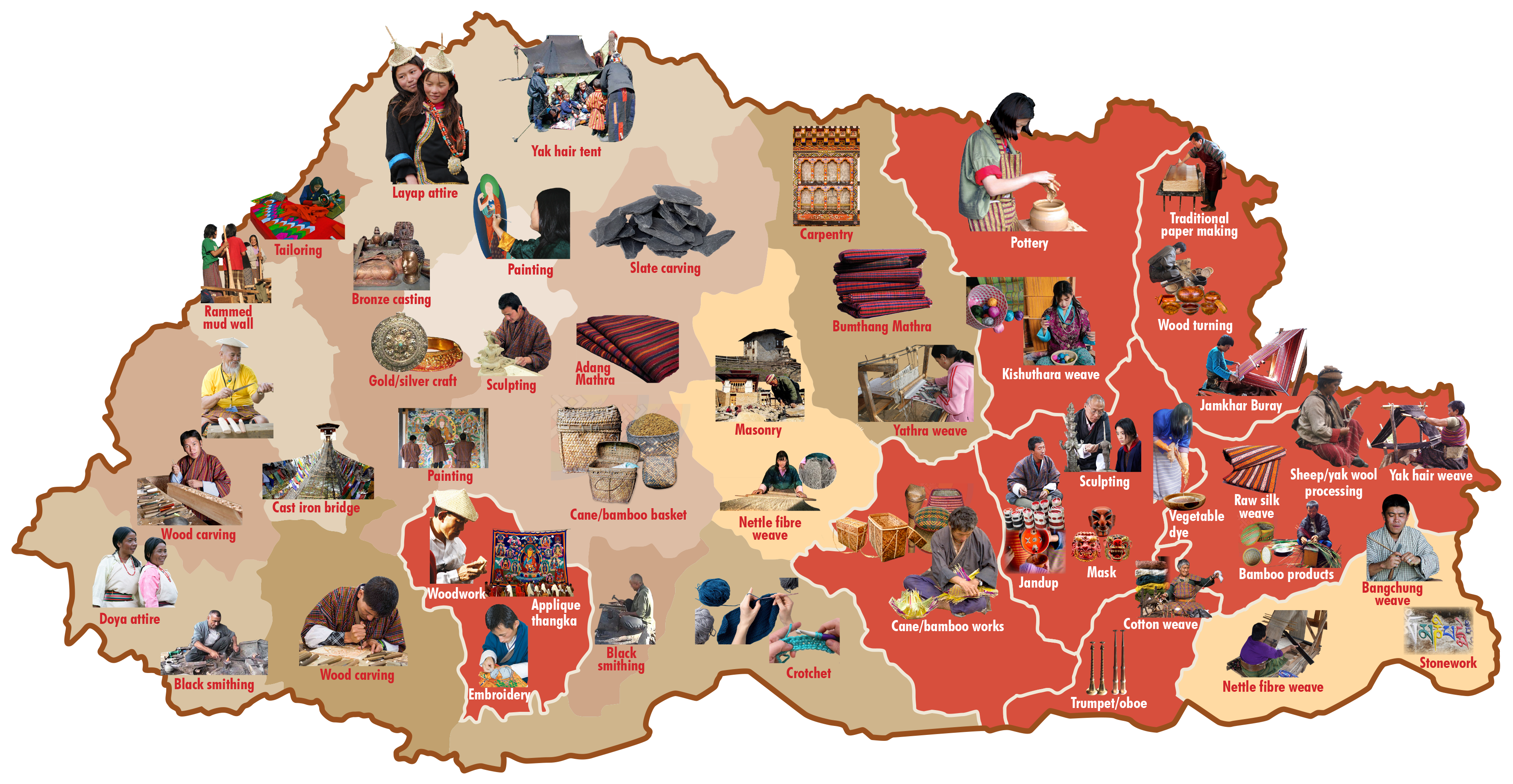About handicrafts of Bhutan
The crafts of Bhutan are a symphony of color, creativity, and cultural heritage.
The origins of Bhutanese arts and crafts go back to the 15th century. Two hundred years later, in the 17th century, they were first categorized as ZorigChusum or “The thirteen arts and crafts of Bhutan.” Today, this invaluable tradition and heritage is best preserved in the rural areas, where artisans inherit the skills passed down through generations as part of their precious communal heritage.
Even today, in the remote village of Khoma, in the eastern Lhuentse district, girls as young as eight weave Kishuthara, or the valley’s historically renowned silk patterns. As they grow up, their skills gain a depth and richness of technique not seen in other parts of the country, nor indeed matched in most parts of the world. In rural Trashiyangtse, another eastern region, the exquisite wooden Daapa bowls chiseled from the knots and burls of trees are a specialty, a painstaking craft whose practitioners pass down the ancient skills and techniques of their ancestors to younger generations in the community.
Elsewhere in Bhutan, artists work meticulously on intricate Thangkas or religious scrolls without varying the minutest details of divine symmetry.
These women who weave rainbows from yarns and the men who skillfully sculpt or paint, who leave their lasting imprints on history, however, do not always receive the recognition that is their due. This is because, in a predominantly Buddhist society like Bhutan, most artistic pursuits portray religious figures or themes, and Buddhist humility dictates that their work remains unsigned for posterity.
In their means of income too, such craftspeople earn little. Middlemen take what they create to the urban centers for sale to tourists, collectors and the wealthier citizens, leaving their original producers with neither the intellectual copyright to their work, nor any tangible profit that can sustain them comfortably. In this way, Bhutanese craftspeople are sometimes among the most disadvantaged members of society.
We must, therefore, support this important source of community vitality not only for the preservation of our precious heritage but as well to enhance the economic benefits to our rural communities.

Handicrafts Map of Bhutan

